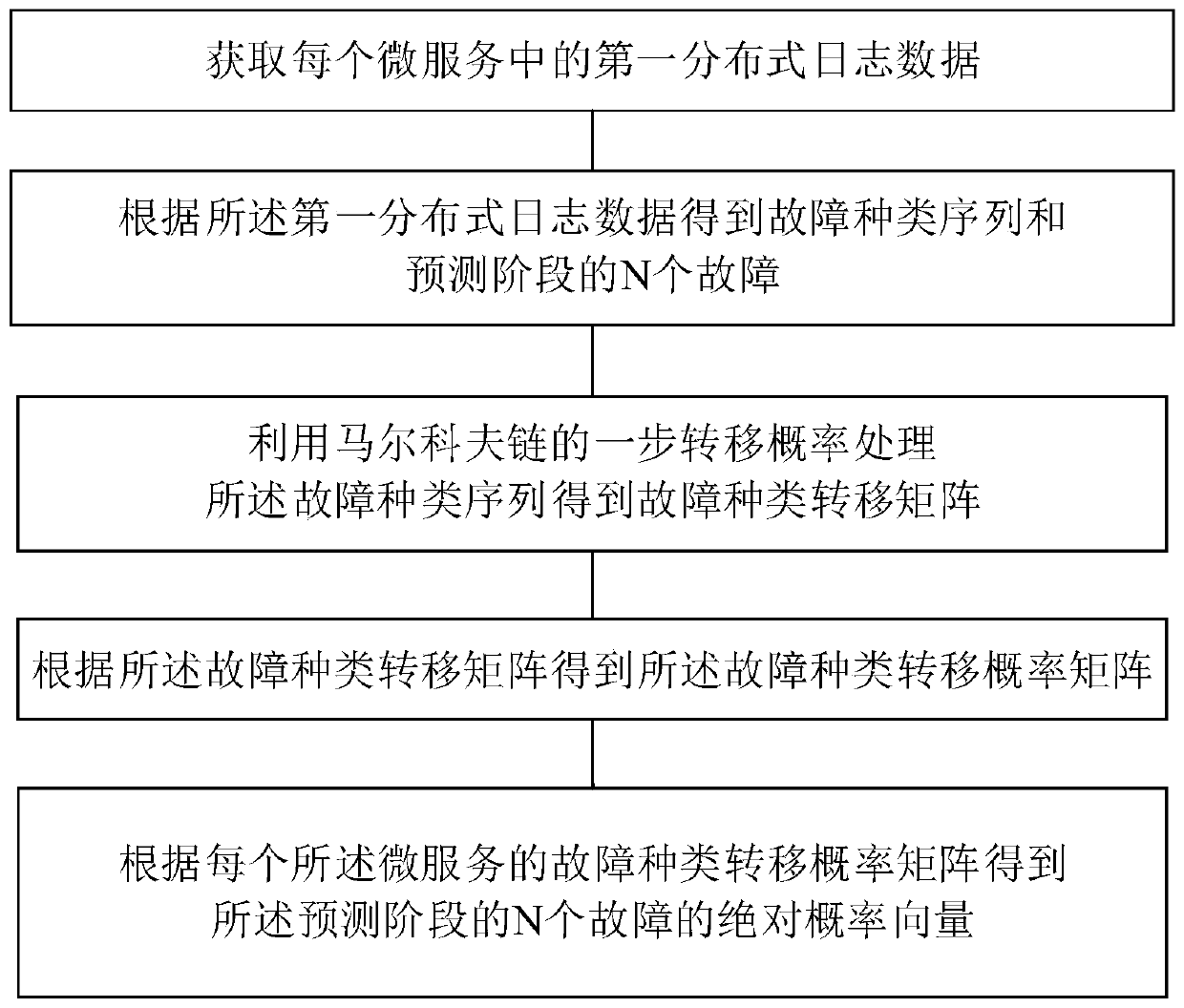Micro-service reliability prediction method and prediction device, electronic equipment and storage medium
A prediction method and microservice technology, applied in the field of microservices, can solve problems such as the inability to solve the reliability analysis effectively, and the reliability analysis method unable to accurately analyze the reliability of decentralized microservices.
- Summary
- Abstract
- Description
- Claims
- Application Information
AI Technical Summary
Problems solved by technology
Method used
Image
Examples
Embodiment 1
[0048] See figure 1 , figure 1 It is a schematic flowchart of a microservice reliability prediction method provided by an embodiment of the present invention. The present invention provides a microservice reliability prediction method, which may specifically include:
[0049] Step 1. Obtain the first distributed log data in each microservice;
[0050] Step 2. Obtain the fault type sequence and N faults in the prediction stage according to the first distributed log data;
[0051] Step 3, using the one-step transition probability of the Markov chain to process the fault type sequence to obtain the fault type transition matrix;
[0052] Step 4, obtain the fault type transition probability matrix according to the fault type transition matrix;
[0053] Step 5. Obtain the absolute probability vectors of N faults in the prediction stage according to the fault type transition probability matrix of each microservice.
[0054] Nowadays, more and more software systems adopt the micr...
Embodiment 2
[0063] At present, the reliability analysis methods of traditional software systems are all aimed at multi-instance deployment applications of monolithic architecture or SOA. Traditional reliability analysis methods cannot accurately analyze the reliability of decentralized microservices, and traditional reliability analysis methods cannot solve the problem of effective analysis of reliability in the face of large traffic and high concurrent user access to microservices . Secondly, the business of the micro-service system of the Internet of Things is relatively complex, and the traditional reliability analysis method cannot meet the new problems brought about by the expansion of the micro-service business. In addition, the reliability analysis methods in the prior art all require a large amount of service invocation data, that is to say, the reliability of the service is considered from the perspective of the service user. will have a certain impact.
[0064] Based on the ab...
Embodiment 3
[0110] See Figure 4 , Figure 4 It is a structural schematic diagram of a prediction device provided by an embodiment of the present invention.
[0111] The predictive device, including:
[0112] An acquisition module, configured to acquire the first distributed log data in each microservice;
[0113] A processing module, configured to obtain the fault type sequence and N faults in the prediction stage according to the first distributed log data;
[0114] A transition matrix determination module, configured to process the fault type sequence using a one-step transition probability of a Markov chain to obtain a fault type transition matrix;
[0115] A transition probability matrix determination module, configured to obtain the fault type transition probability matrix according to the fault type transition matrix;
[0116] The prediction module is configured to obtain the absolute probability vectors of N faults in the prediction stage according to the fault type transition...
PUM
 Login to View More
Login to View More Abstract
Description
Claims
Application Information
 Login to View More
Login to View More - R&D
- Intellectual Property
- Life Sciences
- Materials
- Tech Scout
- Unparalleled Data Quality
- Higher Quality Content
- 60% Fewer Hallucinations
Browse by: Latest US Patents, China's latest patents, Technical Efficacy Thesaurus, Application Domain, Technology Topic, Popular Technical Reports.
© 2025 PatSnap. All rights reserved.Legal|Privacy policy|Modern Slavery Act Transparency Statement|Sitemap|About US| Contact US: help@patsnap.com



